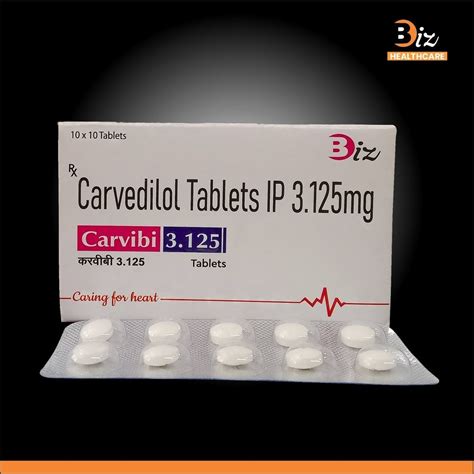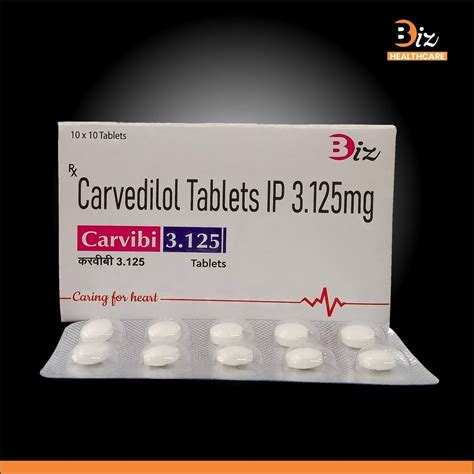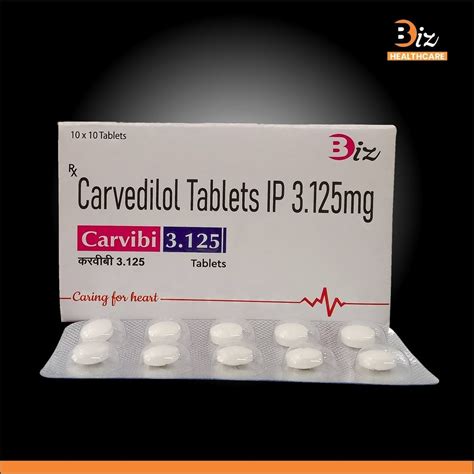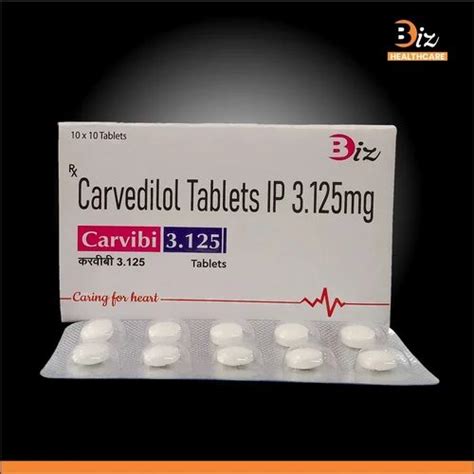Intro
Discover the Carvedilol 3.125 mg dosage guide, exploring its uses, benefits, and side effects for hypertension and heart failure management, with expert advice on administration, interactions, and precautions.
Carvedilol is a medication that has been widely used in the management of various cardiovascular conditions, including high blood pressure and heart failure. It belongs to a class of drugs known as beta-blockers, which work by blocking the effects of the hormone epinephrine, also known as adrenaline, and by slowing the heart rate and reducing its workload. One of the commonly prescribed dosages of carvedilol is 3.125 mg, and understanding its usage, benefits, and potential side effects is crucial for patients who are prescribed this medication.
The importance of carvedilol, particularly at the 3.125 mg dosage, lies in its ability to provide effective management of symptoms associated with heart failure and high blood pressure, without causing excessive side effects that are often seen with higher doses. This dosage is especially beneficial for patients who are initiating therapy with carvedilol, as it allows for a gradual increase in dosage as needed and as tolerated by the patient. Moreover, the 3.125 mg dosage of carvedilol has been studied in clinical trials, demonstrating its efficacy and safety in improving survival and reducing hospitalization in patients with heart failure.
For patients who are prescribed carvedilol 3.125 mg, it is essential to understand how to take the medication correctly to achieve the best possible outcomes. The medication is usually taken orally, once or twice a day, with or without food. However, it is recommended to take carvedilol with food to reduce the risk of orthostatic hypotension, a condition characterized by a sudden drop in blood pressure upon standing. Patients should also be advised to take their medication at the same time every day to maintain a consistent level of the drug in the bloodstream.
Introduction to Carvedilol 3.125 Mg

Benefits of Carvedilol 3.125 Mg
The benefits of carvedilol 3.125 mg include its ability to improve heart function, reduce symptoms of heart failure, and lower blood pressure. By slowing the heart rate and reducing the force of the heart's contractions, carvedilol decreases the heart's oxygen demand, which can help to alleviate chest pain (angina) in patients with coronary artery disease. Additionally, the alpha-blocking effects of carvedilol help to relax blood vessels, further reducing blood pressure and improving circulation.How Carvedilol 3.125 Mg Works

Steps to Take Carvedilol 3.125 Mg
To take carvedilol 3.125 mg effectively, patients should follow these steps: - Take the medication at the same time every day. - Swallow the tablet whole with a glass of water. - Do not crush or chew the tablet. - Take the medication with food to reduce the risk of orthostatic hypotension. - Do not stop taking carvedilol without consulting a doctor, as this can lead to worsening of heart failure symptoms.Side Effects of Carvedilol 3.125 Mg

Practical Examples of Carvedilol 3.125 Mg Usage
In clinical practice, carvedilol 3.125 mg is often used as a starting dose for patients with heart failure or high blood pressure. For example, a patient with mild heart failure may be started on carvedilol 3.125 mg twice a day, with gradual increases in dosage as needed and as tolerated. Similarly, a patient with high blood pressure may be prescribed carvedilol 3.125 mg once a day, with adjustments in dosage based on blood pressure response.Statistical Data on Carvedilol 3.125 Mg

Benefits Over Other Medications
Carvedilol 3.125 mg offers several benefits over other medications used to treat heart failure and high blood pressure. Its unique mechanism of action, which includes both beta- and alpha-blocking effects, makes it particularly effective in managing complex cardiovascular conditions. Additionally, carvedilol has been shown to have antioxidant properties, which can help protect the heart from damage.Conclusion and Future Directions

Final Thoughts
For patients who are prescribed carvedilol 3.125 mg, it is essential to work closely with their healthcare provider to monitor their condition and adjust their treatment plan as needed. By understanding the benefits, side effects, and proper usage of carvedilol 3.125 mg, patients can take an active role in managing their cardiovascular health and improving their quality of life.What is the primary use of carvedilol 3.125 mg?
+Carvedilol 3.125 mg is primarily used in the management of heart failure and high blood pressure.
How should I take carvedilol 3.125 mg?
+Carvedilol 3.125 mg should be taken orally, once or twice a day, with or without food, but preferably with food to reduce the risk of orthostatic hypotension.
What are the common side effects of carvedilol 3.125 mg?
+Common side effects include dizziness, lightheadedness, fatigue, and nausea. Less common but more serious side effects can include shortness of breath, swelling of the feet, ankles, or hands, and chest pain.
We invite you to share your thoughts and experiences with carvedilol 3.125 mg in the comments below. If you found this article informative, please consider sharing it with others who may benefit from this information. Your engagement and feedback are invaluable to us, and we look forward to continuing the conversation on managing cardiovascular health effectively.
